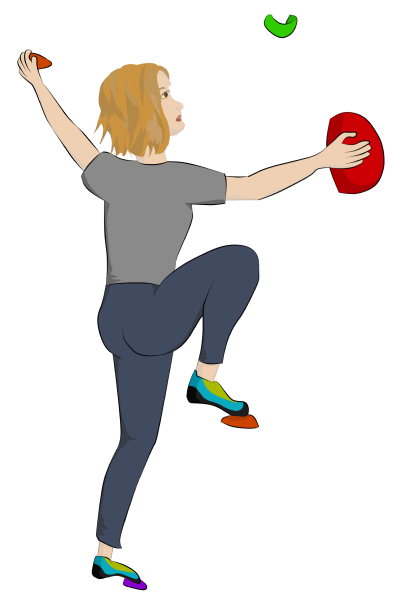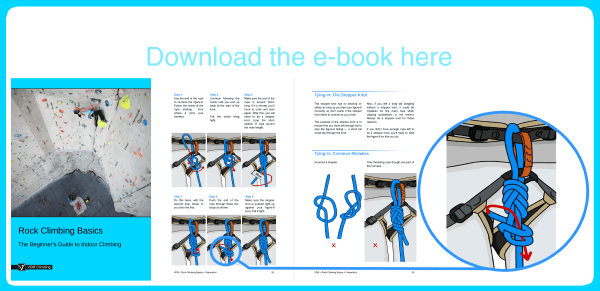'Basic Rock Climbing Technique' is part of the book - Rock Climbing Basics: The Beginner's Guide.

With good climbing technique, you'll be able to cruise up the wall with minimum effort. The climbing technique you use will differ depending on the angle of the climb, the shape of the holds and how far apart they are. As you get better, you'll encounter overhangs and moves that require some serious finger strength. However, you'll build this naturally as you progress towards harder climbs. So to begin with, here are the basics.
Extended Arms
Keep your arms extended when looking for foot holds or moving your feet. Having bent elbows puts unnecessary strain on your biceps.
Hips Close to the Wall
The more you lean out from the wall, the more you rely on your fingers and arms. This drains your energy quickly and will almost definitely hurt your fingers over time. Instead, keep your hips close to the wall by pointing your knees to the side, like a frog. This will keep your weight on your legs.
Good Footwork
If you're struggling to reach a hand hold, try moving your feet higher first. Beginners often scuff their feet across the wall, wearing out their shoes fast. Focus on placing your foot precisely (like a ninja creeping across eggshells) and you'll soon be confident with the smallest foot holds. Learn more about footwork.

Use Your Legs
It may feel natural to use your upper body muscles to pull yourself up the wall. But doing this will cause you to tire out very quickly. Your legs are naturally much stronger, so focus on pushing up with your legs instead of pulling up with your arms.
Relaxed Grip
Focus on using hand holds purely for balance; use them to pull yourself into the wall, rather than up the wall. Over-gripping will soon give you epic 'forearm pump'. Learn more about using hand holds.
Plan Moves In Advance
Before you climb, think about the best way up the route. Visualize exactly which holds you will use with each hand and foot. The more time you spend unsure where to go, the more tired you'll get.
Move Deliberately
You may see other climbers 'dynoing'. This advanced climbing technique is mainly used to impress other climbers rather than being an efficient way up the wall. To start with, you should focus on moving slowly and fluidly, treating the climb more like a slow dance and less like a mosh pit. Learn more about movement.
Find Resting Points
A good rest spot is anywhere you can comfortably stand with most of your weight on your feet. It gives you time to plan the next few moves and relax your arms. You should be able to take one arm comfortably off the wall to chalk-up and shake out your arms. Let them hang and give them a gentle shake to dislodge some of the lactic acid that has built up.






One thought on “Basic Rock Climbing Technique”
Comments are closed.